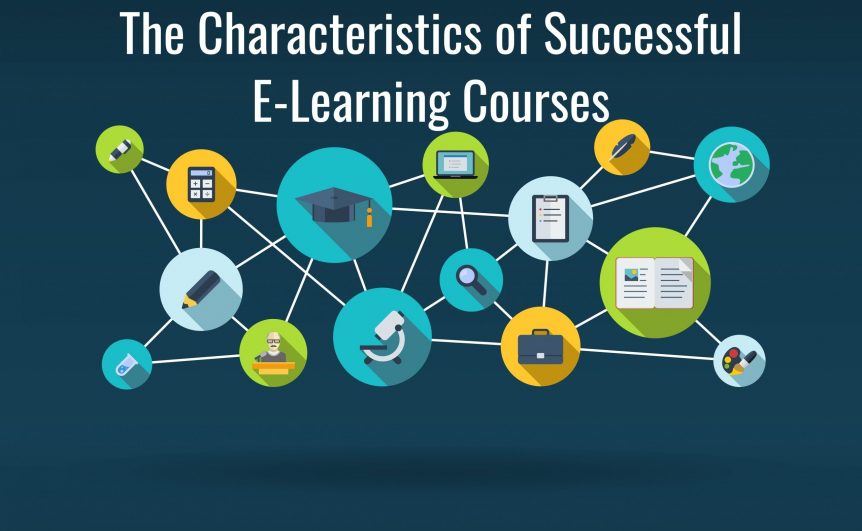The Characteristics of Successful E-Learning Courses
Everyone involved in creating a new e-learning course wants it to be successful. As with all forms and methods of training, however, success is not guaranteed. So, what are the characteristics of a successful e-learning course?
The most important characteristics are in the sections below. However, before you even get into creating the content, visual design, and features, you need to have a clearly defined objective for the e-learning course you are creating.
Without a clearly defined objective, the course is unlikely to achieve the levels of success you want it to achieve, plus you will have nothing to provide you with a meaningful measurement. So, creating this objective should be a priority.
What about the other characteristics of successful e-learning courses? Here are the most important.
Fantastic Appearance and Professional Visuals
The visual design of your course is crucial, as it shows you take the topic and the content seriously. The visual appearance also reflects on your brand and business, plus good design can facilitate the learning process.
Distraction-Free Design
As the above point states, good design is essential for successful e-learning courses. However, it is possible to go too far with design. This includes adding elements that distract learners.
Successful e-learning courses don’t have these distracting elements. Instead, they have white space when there is nothing of substance to fill the area, while everything included in the design is there to enhance the learning process.
Good Branding
The e-learning course you are creating will become an asset for your business. It is also a communication tool with your employees. Therefore, it should clearly feature your organisation’s branding.
Design Consistency
Staying with the design theme, successful e-learning courses have consistent design throughout. This doesn’t just apply to the design and layout of each screen, though, as it also applies to the various content elements that you include, such as graphics and videos. They should also be designed in a way that is consistent with the rest of the course.
Interactive Elements
The best e-learning courses are highly interactive, where learners actively participate in the completion of the course. This style of e-learning course is much more effective than passive courses where the learner spends their time reading text, looking at images, and watching videos.
Those elements are important, too, but you also need elements that are interactive. The best interactive elements are those that let the learner practice what they have learned.
Well Structured and Focused Content
The way you structure and present the content in your e-learning course is also critical for ensuring success. Firstly, it should be focused on the topic of the course, and it shouldn’t go off on tangents. You can offer learners links and information to other material if they want to explore a related area further, but it is almost always best to keep the content of your course on-topic.
You should also structure the content in a way that facilitates the learning journey.
Variety of Media
Media elements are important in e-learning, including images, graphs, infographics, videos, and audio elements. They work best when you include various types, especially when you use the most appropriate type of media for the information or concept you are trying to explain. For example, sometimes it will be best to use a graph, while for other concepts, a video will be better.
Content That Is Engaging
Engagement is a commonly used measurement of e-learning success, plus engaging courses typically get the best results. Therefore, it is crucial you make the content in your course as engaging as possible.
Following the previous few tips will help, including adding interactive elements and a variety of media.
Content That is Challenging
If learners find the content too easy, especially if they feel like they know it already, they will quickly become bored and disengaged. This is not good for them or the success of your e-learning course.
While it may be difficult for some types of e-learning courses, including some compliance-related topics and refresher courses, you will get a much better result if the course is challenging.
A Positive, Professional, and Friendly Voice
Tone of voice is important in e-learning course design, as it impacts engagement levels and how learners relate to the content. The voice that should be apparent throughout your course should be professional without being stuffy, positive without being patronising, and friendly without being informal.
On-Demand Availability
One of the biggest benefits of e-learning is that people can complete your course at a time that best suits them. Therefore, you should make sure you don’t do anything during the creation of the course that limits this benefit. For example, check that your course is responsive so it can be completed on any device.
Easy Access to Support
Learners complete e-learning courses on their own, but that shouldn’t mean they don’t have access to support. Instead, support should be available to learners who need it, and it should be clear how to access that support.
Putting Everything Together
One of the things the points above demonstrate is that creating a good e-learning course is about more than gathering content and putting it onto a Learning Management System (LMS). There are several crucial elements you should include, plus you need educational, design, and technical skills. Often, the best way to ensure your course is successful is to use a professional e-learning designer in the UAE or Saudi Arabia. Whatever approach you decide to take, making sure your course features the characteristics above will help make it a success.
